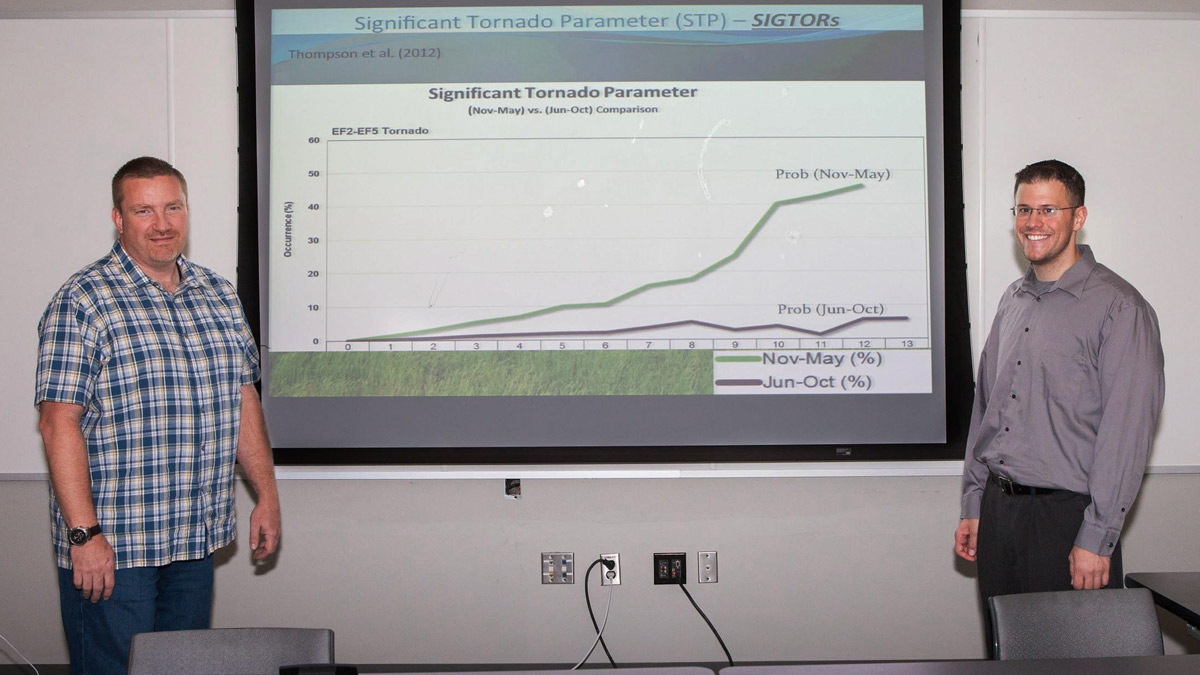
John Hart (SPC) and Ariel Cohen (SPC). Photo by James Murnan/NOAA
Storm Prediction Center forecasters John Hart and Ariel Cohen are working together on a major project to improve the way forecasters perform short-term threat assessment of severe thunderstorm hazards. Their work is expected to be able to help improve the precision and accuracy of critical, impact-based decision support services relevant for severe thunderstorm forecasting to aid our facilitation of a Weather-Ready Nation.
This project involves the development and documentation of the “Statistical Severe Convective Risk Assessment Model,” also known as SSCRAM. SSCRAM produces severe thunderstorm wind, hail, and tornado probabilities for locations in the path of thunderstorms within a couple of hours, based on parameters describing the storm’s current environment. This system combines the meteorological environment, location, and time of year corresponding to millions of cases of past lightning strikes, and evaluates whether those lightning strikes are linked to severe weather reports in the short-term. Such a large database naturally serves as the basis for deriving relationships between various parameters and severe weather hazards, which directly feed into short-term severe weather threat assessment.
Hart, Cohen, and others on the SPC staff continue to evaluate SSCRAM’s output in real-time to continue improving its design. Eventually, it is envisioned that SSCRAM will serve as a foundation for expressing probabilities for individual severe thunderstorm hazards.
In addition to using SSCRAM as a forecasting tool, Hart and Cohen have used it to conduct research on various types of high-impact weather phenomena. For example, they used the SSCRAM system to highlight the challenge of significant tornado forecasting using meteorological parameters during the months of June-October compared to November-May. Hart and Cohen already have published their manuscripts on SSCRAM in the American Meteorological Society’s Weather and Forecasting journal. Their manuscripts are entitled, “The Statistical Severe Convective Risk Assessment Model,” and “The Challenge of Forecasting Significant Tornadoes from June to October using Convective Parameters,” and provide additional details on SSCRAM and its applications.